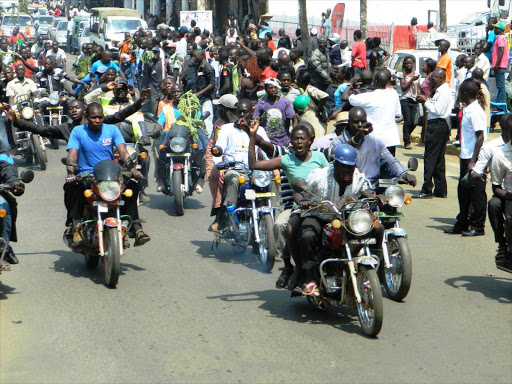
Though boda boda riders are an inseparable part of daily life, they have often faced criticism over safety concerns.
Now City Hall wants them to be your first responders in case of a road crash.
From offering first aid to becoming ambassadors of road safety, Governor Johnson Sakaja’s administration wants the riders empowered to help during accidents.
In a new initiative launched last Wednesday, the Nairobi government, the Kenya Medical Training College (KMTC) and the National Transport and Safety Authority (NTSA) partnered to train 1,200 boda boda riders in basic life support and road safety.
The month-long programme is being conducted at three KMTC campuses—Nairobi, Mathari and Karen—where riders will be trained in weekly cohorts of 100 participants per campus. The training aims to equip them with vital pre-hospital emergency care skills, foster coordination with emergency response services, and integrate road safety education into their daily operations.
Speaking during the launch at KMTC Nairobi, mobility and public works executive Ibrahim Auma, who also chairs the county transport and safety committee, said the initiative will not only improve the public perception of boda boda riders but also deploy them for public good while instilling road safety and discipline.
He acknowledged that boda boda riders and their passengers remain some of the most frequent victims of road crashes.
Auma attributed this to limited emergency response capacity at accident scenes, especially before victims reach hospital.
He said despite riders often being the first to arrive at crash sites, they usually lack the lifesaving skills necessary to intervene effectively. Auma expressed optimism the training would change that reality.
He added that the impact of the initiative will be both immediate and long-term.
Trained riders will be able to administer first aid, control bleeding, immobilise injured persons and liaise with ambulances and health service providers—all crucial steps in reducing fatalities and the risk of permanent injury.
The programme also seeks to change the mindset of riders by promoting safe riding habits and encouraging responsible conduct on the road.
Auma said additional strategic partners will be brought on board to expand and sustain the programme, with a vision to scale it nationally, particularly along busy transport corridors.
The urgency behind this initiative is underscored by grim statistics. In the first quarter of 2025 alone, Kenya recorded 431 deaths from motorcycle crashes—an average of five lives lost every day.
This figure was higher than the combined deaths of vehicle drivers and passengers during the same period, according to NTSA data.
In 2024, more than 1,200 riders died on Kenyan roads, contributing to about 4,800 road-related deaths nationally.
A significant number of these fatalities occurred in urban areas like Nairobi, where motorcycles are a popular and affordable means of transport.
The country’s healthcare system has also borne the brunt of this crisis.
Hospitals such as Nakuru Level 5 have reported overflowing trauma wards, with many patients being boda boda accident victims suffering from severe head injuries, broken limbs and spinal damage.
Yet despite these high stakes, helmet use among riders and passengers remains alarmingly low.
Recent findings showed only 63 per cent of riders in Nairobi consistently wore helmets, while passenger compliance stood at just 15 per cent. This makes the current initiative not just timely but essential.











